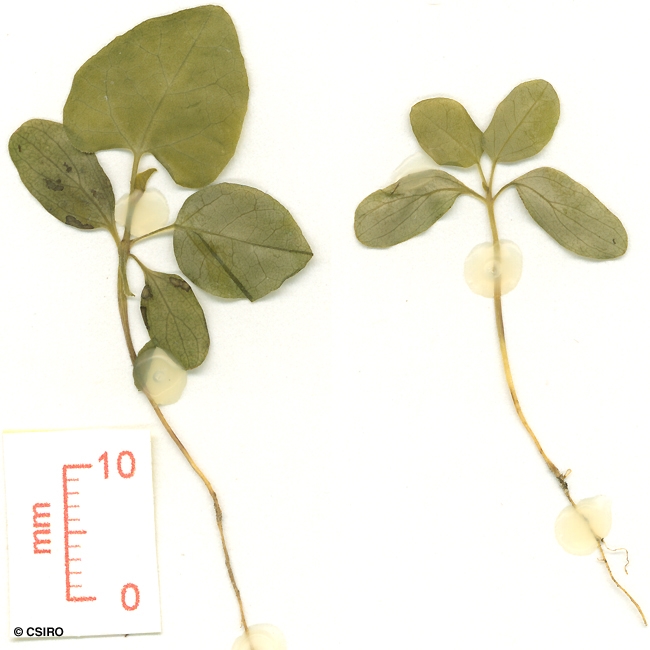Australian Tropical Rainforest Plants - Online edition
Aristolochia pubera var. aromatica E.M.Ross




Ross, E.M. (2007) Flora of Australia 2: 458. Type: Stannery Hills, Qld, 16 Feb. 1975, R.Collins 20108; holo:QRS.
Stinking Aristolochia
Slender vine, creeping, trailing or sometimes erect.
Leaves +/- distichous, arranged in two ranks, one on each side of the twig. Leaf blades oblong to broadly obling, very obtuse, about 2.5-10 x 2-6.5 cm, petioles about 1.3-4.5 cm long. Both sides of leaves with hairs, underside of leaves densely glandular dotted. Lateral veins depressed on the upper surface, about 3-5 on each side of the midrib. Leaves emit an aromatic or obnoxious odour when crushed.
Flowers +/- horizontal. Perianth curved and sinuous, base inflated about 5-6 mm diam. and then contracted forming a tube about 17 mm long including the inflated base. Tube ending in a lip and a long +/- linear lobe about 20-25 x 1-1.5 mm. Stamens 6, fused together to form a structure around the style. Anthers sessile. Stigmas 6. Ovary 6-locular. Ovules numerous in each locule.
Features not available though probably similar to Aristolochia pubera var. pubera.
May be distinguished from var. pubera by the dense multicellular hairs on both leaf surfaces, and numerous glands on the lower leaf surface.





